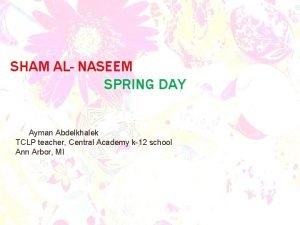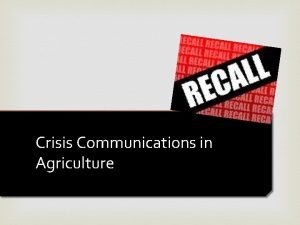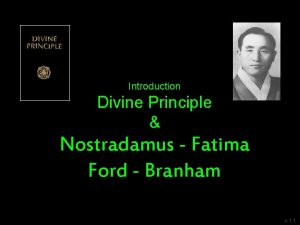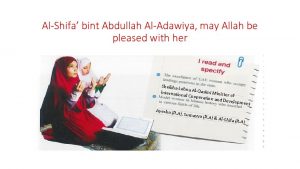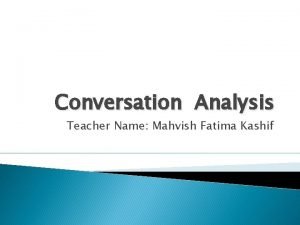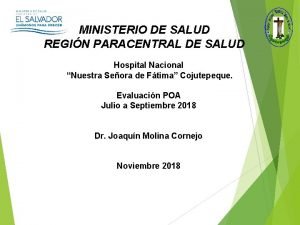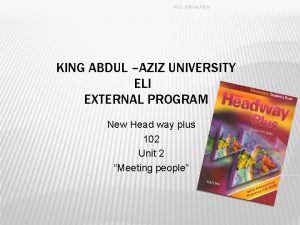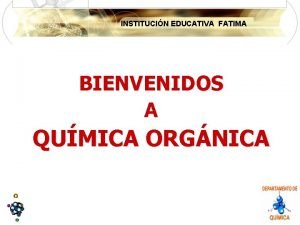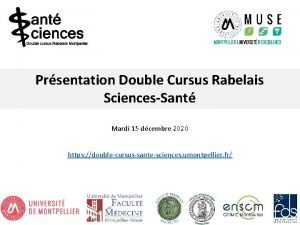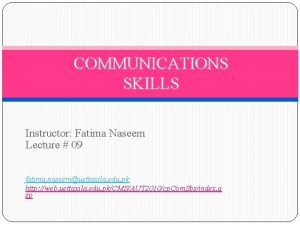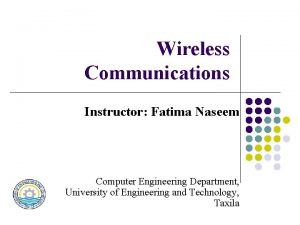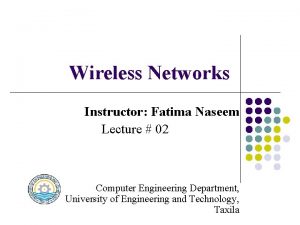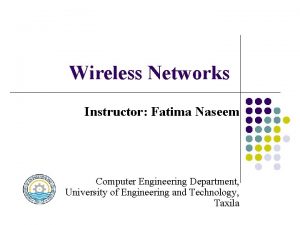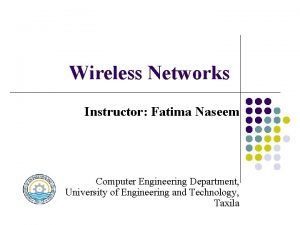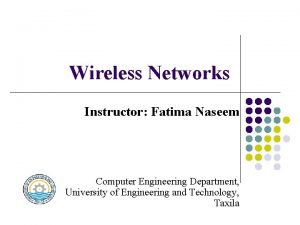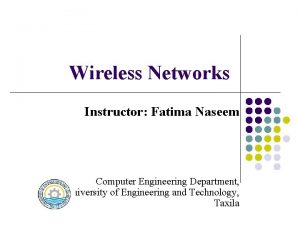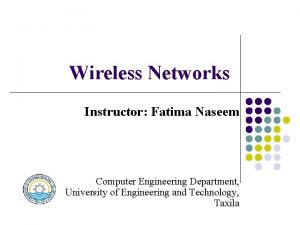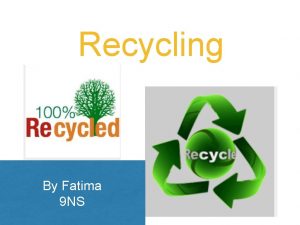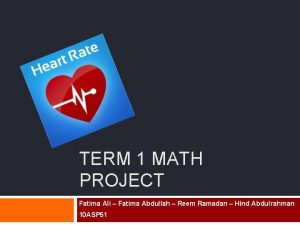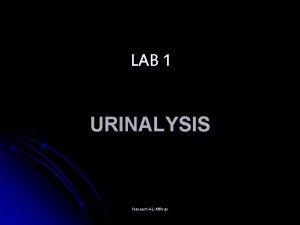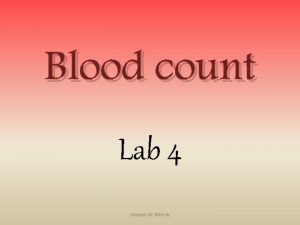COMMUNICATIONS SKILLS Instructor Fatima Naseem Lecture 08 fatima























- Slides: 23

COMMUNICATIONS SKILLS Instructor: Fatima Naseem Lecture # 08 fatima. naseem@uettaxila. edu. pk http: //web. uettaxila. edu. pk/CMS/AUT 2010/cp. Com. Sbs/index. a sp

Chapter # 06 The Process Of Preparing Effective Business Messages

Overview Five Planning Steps Identify your purpose Analyze your audience Choose your ideas Collect your data Organize your message Basic Organizational Plans Direct (Deductive) Approach Indirect (Inductive) Approach Beginnings and Endings Opening and Closing Paragraphs Composing the message Drafting/ Revising/ Editing

Five Planning Steps Identify your purpose Analyze your audience Choose your ideas Collect your data Organize your message

Identify Your Purpose The objective of your message is twofold; the purpose of your message and to create the goodwill Your message can be informational, persuasive or negotiation

Analyze Your Audience See your message from receivers point of view Be very careful while communicating with foreigners, for they have different culture Have some pre-knowledge of the receiver Be very specific about the salutation, names, initials, their basic cultural rules Try to see the person as a member of a group like a business person or a professional, a new or long time customer etc

Choose Your Ideas With your purpose and receiver in mind, choose your ideas for message Ideas depend on the type of message, situation, cultural context If you are answering to someone's letter highlight all queries and write them in short form and reply them If message is complex do some brain storming and write all ideas Then select ideas appropriate for your message

Collect Your Data Collect the data to support your ideas Be sure you are aware of your company's policies and procedures if your meassage requires them Be careful about the facts, figures, dates, time, names, titles, addresses etc. Check for the precision of your data

Organize your message Before writing your first draft outline your organization of message orally or write it roughly. Organization may be direct or indirect

Basic Organizational Plans

Basic Organizational Plans The choice of organizational plan depends on your receiver, his/her knowledge of topic and situation, his/her cultural conventions etc. Generally for letters & memos there are four basic organizational plans: Direct-Request Good News Bad News Persuasive-Request All these are flexible guides and not hard & fast rules

Direct (Deductive) Approach Used when audience is receptive Begin with main idea or good news Include good news and direct request plans Three parts: Main idea Explanation Courteous close See checklist 6. 1 for differences and similarities between the two types

Indirect (Inductive) Approach When resistance to message is expected Includes bad news and persuasive messages Main idea not presented first Buffer: a relevant pleasant, neutral or receiver benefit statement In this message a buffer is introduced See check list 6. 1

Beginnings and Endings

Beginnings and Endings Two most important positions in a business messages are opening and closing As said: “First impression is the last impression” And “We remember best what we read last” Whenever possible put the main idea in beginning and endings

Opening Paragraphs Choose opening appropriate for message purpose and reader Main idea first(request, good news, announcements) Buffer first (refusal or bad news) Attention getting statements first (persuasive) Make the opening considerate, courteous, Concise, Clear Check for Completeness See checklist 6. 3

Closing Paragraphs Make action request clear and complete with the Five Ws and the H What and who? How and where? When and why? End on a positive courteous thought Include any apologies before last paragraphs(if applicable) Be friendly Show appreciation Occasionally add a personal note Keep Last Paragraph Concise and Correct See checklist 6. 4

Composing The Message

Drafting Your Message Your first draft is always raw You prepare first draft according to your organizational plan either circular or linear Now you have to refine it by revision and proofreading

Revising Your Message Means adding necessary data and deleting unnecessary material Make sure points are adequately supported Check your organizational support Review your language

Editing and Proof Reading Make sure your documents have no mistakes in grammar, spellings, punctuations or word choice See for typographical errors Read aloud Specially foreign language

Any Questions ?

Next presentation on 8 th December Make sure its of 5 minutes only for each group Quiz of chapter 6 & 16 on 15 th December
 3ème prophétie de fatima - secret de fatima
3ème prophétie de fatima - secret de fatima Sham al naseem
Sham al naseem Crisis communication lecture
Crisis communication lecture 01:640:244 lecture notes - lecture 15: plat, idah, farad
01:640:244 lecture notes - lecture 15: plat, idah, farad Fatima attia
Fatima attia Fatima el hassan
Fatima el hassan Fatima 2
Fatima 2 Dr fatima sameera
Dr fatima sameera Virgen de fatima tercera guerra mundial
Virgen de fatima tercera guerra mundial William branham przepowiednie
William branham przepowiednie Al-shifa bint abdullah
Al-shifa bint abdullah 3e secret de fatima
3e secret de fatima Fatima kashif
Fatima kashif Rif del ministerio de salud
Rif del ministerio de salud Fatima nasser
Fatima nasser Fatima map
Fatima map Ziarat fatima zahra
Ziarat fatima zahra Fatima attia
Fatima attia 3e secret de fatima
3e secret de fatima Secret fatima
Secret fatima Fatima el bechari
Fatima el bechari Wąwóz w międzylesiu
Wąwóz w międzylesiu Venovi dijagrami zadaci
Venovi dijagrami zadaci Imenice
Imenice

